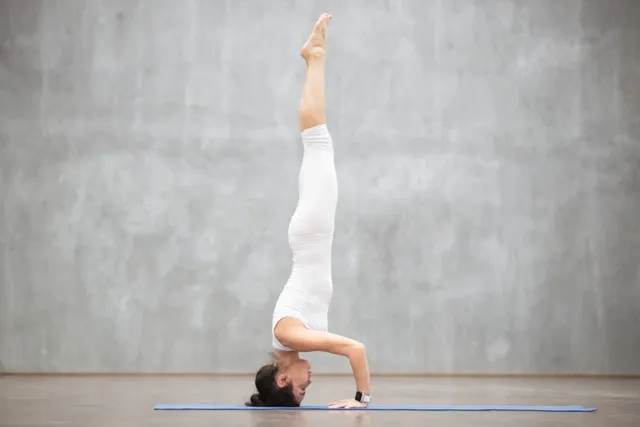
SIRSASANA II
Sequence on SIRSASANA II, (or Salamba Sirsasana II), tripod on head posture.
This inversion posture strengthens the heart and stimulates the cardiovascular system. It helps relieve varicose veins, lightens the legs by promoting the venous return of blood and lymph. When the posture is accompanied by deep breaths, it deeply detoxifies the whole body without tiring the heart.
The foundations of this posture reduce pressure on the lower back and promote core musculature. The actions put in place during the posture strengthen the arms, shoulders and neck.
Entering, holding and exiting this posture improves coordination of the body's voluntary and involuntary functions and improves the sense of balance.
The practice of Sirsasana II (and I) modifies the breathing, it acts mainly during the exhalation which promotes intensity by applying a light pressure of the organs on the diaphragm.
During this inversion blood rushes to the brain with light pressure on the skull, realizing an effective flushing. Remember that the brain is irrigated by an average of 2000 liters of blood per day, which circulate via a network of 100,000 km of capillaries of tiny blood vessels.
The face also being irrigated, its skin is thus nourished thereby reducing facial wrinkles and also maintaining the overall youth of the body.
Regarding psychic benefits, Sirsasana II improves memory and concentration and coordination between body and mind, increases intellectual capacities, helps allay fears and calms the mind.
To benefit from all these effects, one must hold the posture for at least 15 minutes a day.
Its name of "tripod" and related to the balance which is maintained thanks to the three points of support; the top of the head and both hands. Mastering this foundation in tripod is fundamental to learning difficult asanas like Bakasana, Urdhva Kukkutasana, Galavasana and Koundinyasana.
Sirsasana II is perfectly suited to beginners because thanks to the placement of the arms and the skull, if the student has neck pain he cannot climb, while in Sirsasana I, even if he feels discomfort in the neck, he will be able (to want) to go up and he will not be safe.
“The regular and precise practice of Sirsasana develops the body, disciplines the mind and widens the scope of consciousness. One becomes balanced and detached from pain and pleasure, loss and gain, dishonor and honor, defeat and victory." The Yoga Bible, BKS Iyengar
Access the annotated class sequence with posture images and join the community of teachers!